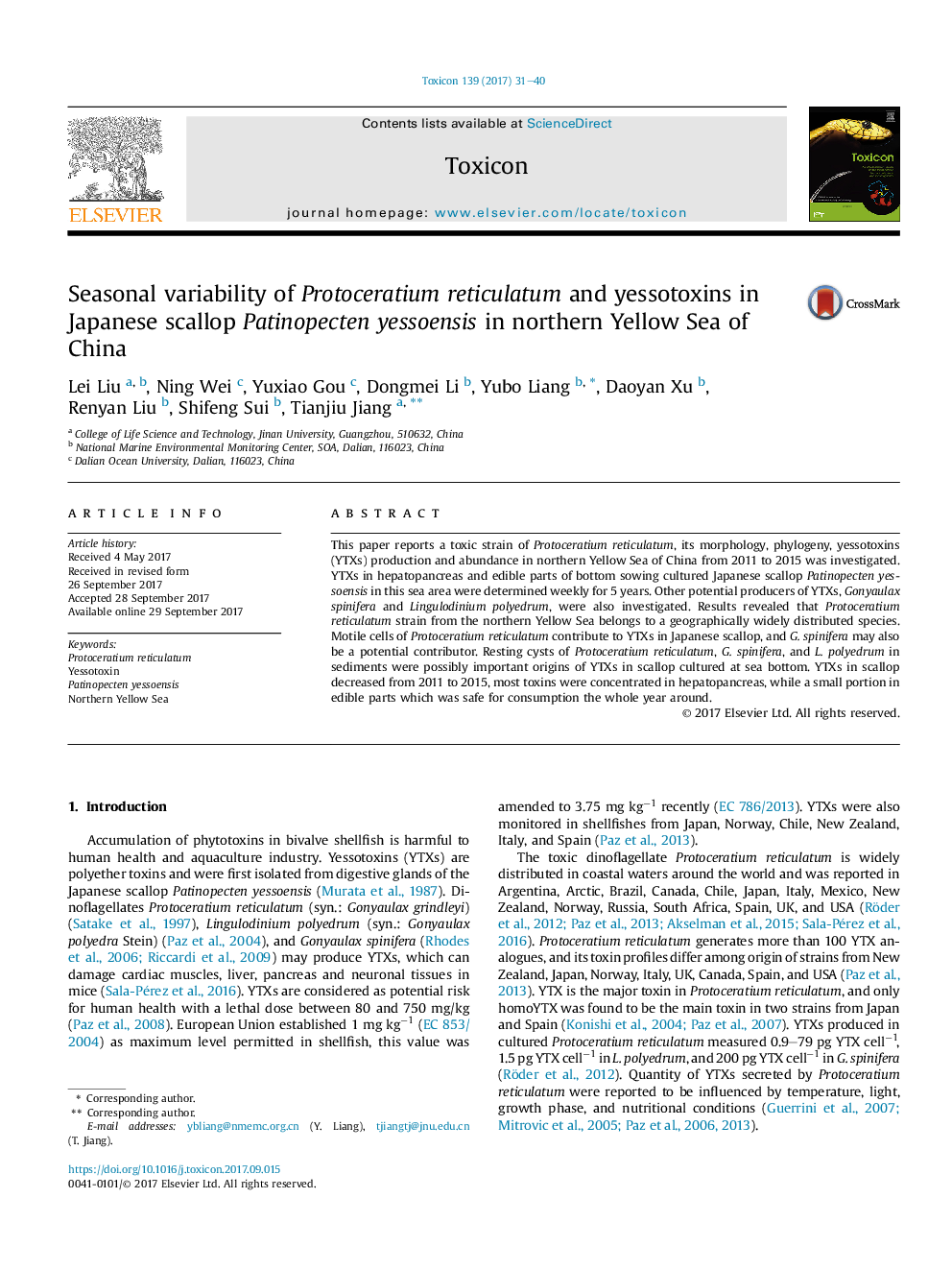| Article ID | Journal | Published Year | Pages | File Type |
|---|---|---|---|---|
| 5519187 | Toxicon | 2017 | 10 Pages |
â¢Yessotoxins annual variation in Japanese scallop was surveyed for five years in the northern Yellow Sea of China.â¢Origins of yessotoxins were investigated.â¢Edible parts of Japanese scallop from this culture zone is safe for consumption throughout the year.
This paper reports a toxic strain of Protoceratium reticulatum, its morphology, phylogeny, yessotoxins (YTXs) production and abundance in northern Yellow Sea of China from 2011 to 2015 was investigated. YTXs in hepatopancreas and edible parts of bottom sowing cultured Japanese scallop Patinopecten yessoensis in this sea area were determined weekly for 5 years. Other potential producers of YTXs, Gonyaulax spinifera and Lingulodinium polyedrum, were also investigated. Results revealed that Protoceratium reticulatum strain from the northern Yellow Sea belongs to a geographically widely distributed species. Motile cells of Protoceratium reticulatum contribute to YTXs in Japanese scallop, and G. spinifera may also be a potential contributor. Resting cysts of Protoceratium reticulatum, G. spinifera, and L. polyedrum in sediments were possibly important origins of YTXs in scallop cultured at sea bottom. YTXs in scallop decreased from 2011 to 2015, most toxins were concentrated in hepatopancreas, while a small portion in edible parts which was safe for consumption the whole year around.
